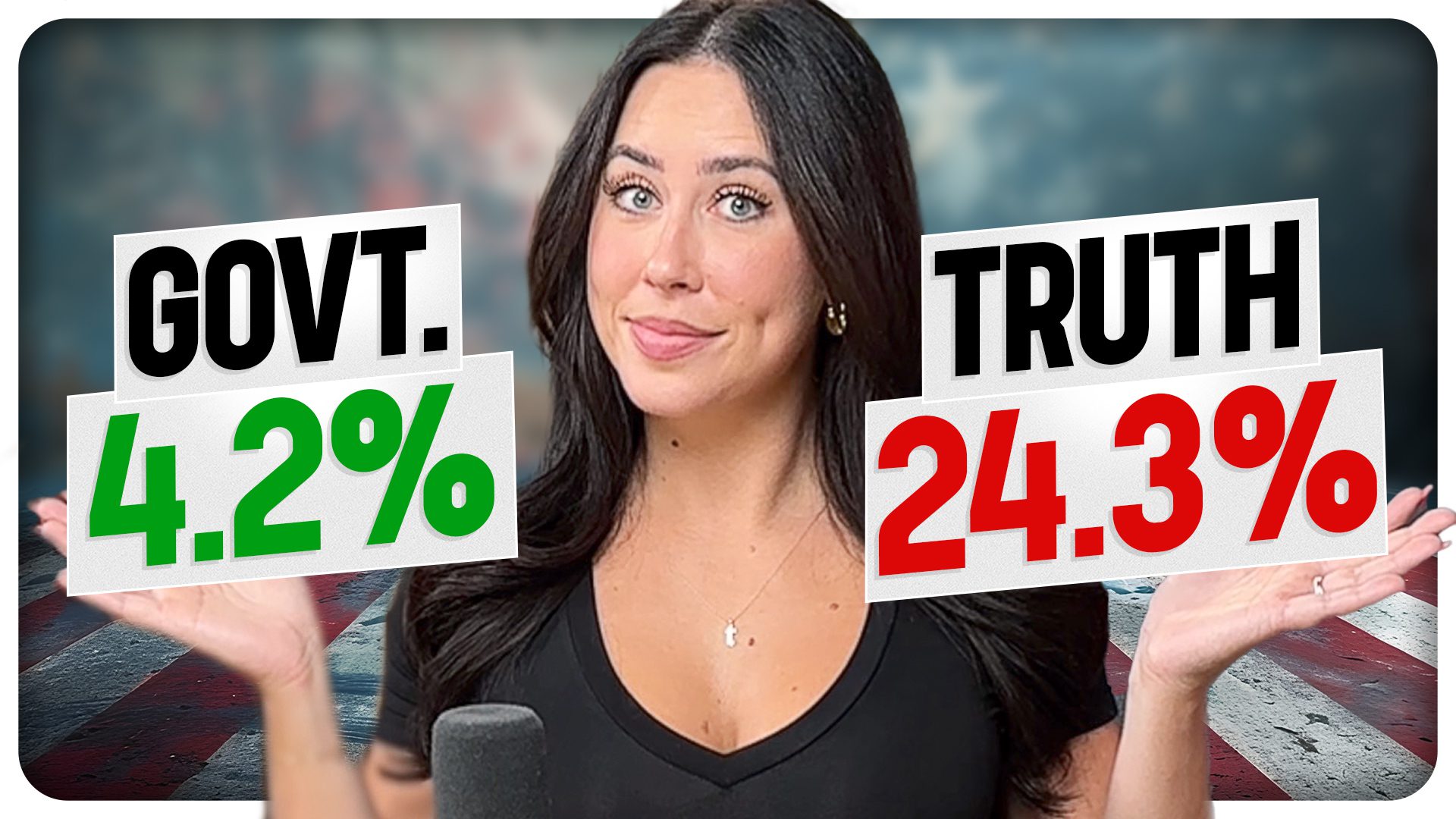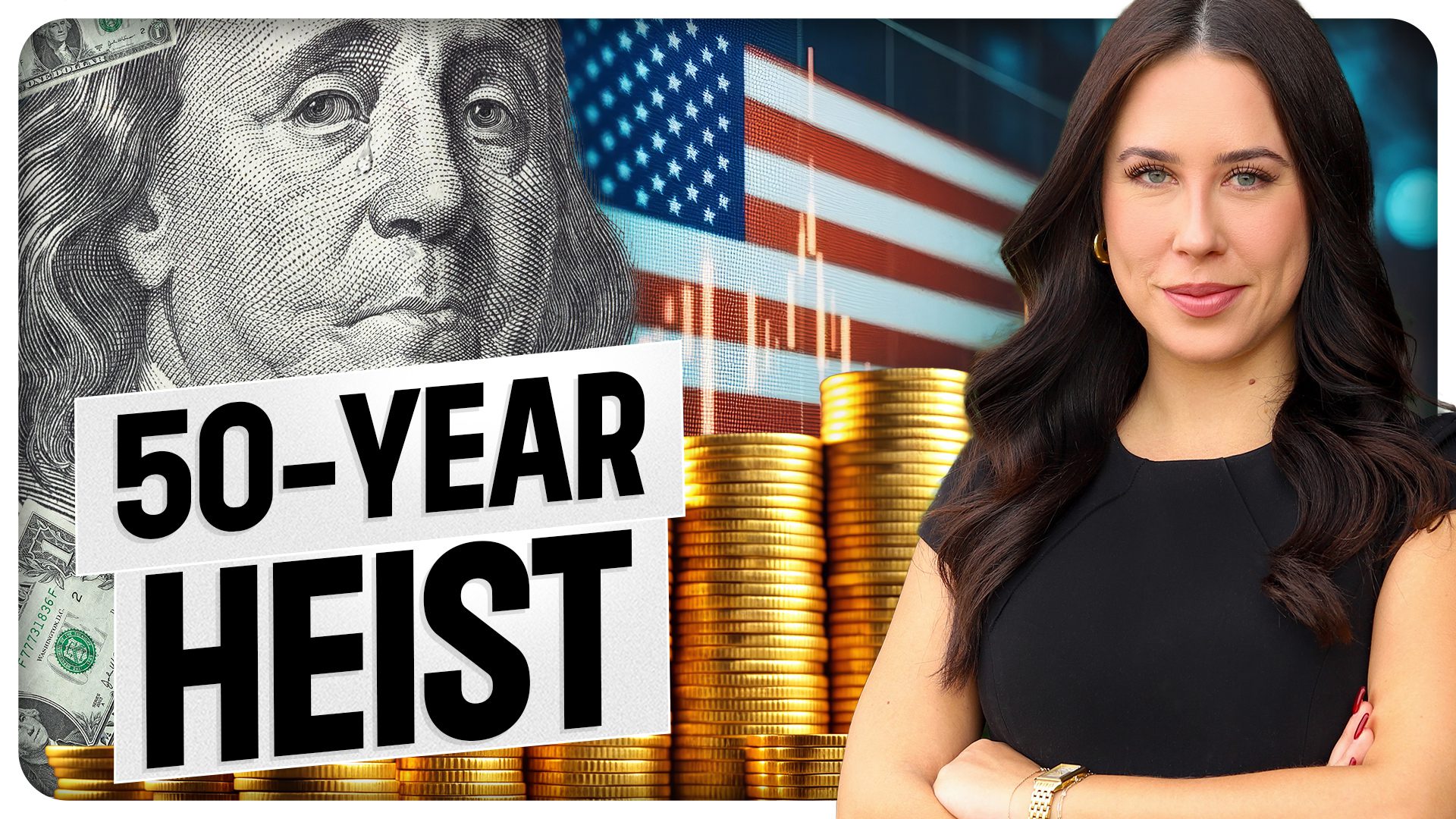JUST IN: Big Banks Get Slammed (FDIC Planning for Worst)

THIS JUST IN, Regulators raise alarms over major banks’ emergency plans, concerns mount over the scale of derivative exposure in the financial sector, and questions emerge about the adequacy of deposit insurance amid banking uncertainties. With whispers of a potential global financial shake-up, what do the experts know that we don’t?
TRANSCRIPT:
Hi everyone. Thank you so much for being here. Big news today in banking. If you’re concerned about your deposits, you’ll want to hear this. Wall Street Journal says regulators cite big banks, including Goldman Sachs and JP Morgan, over living wills. Now, this comes directly from the Federal Reserve and the FDIC, who say that in the event of a failure, so should a bank go bankrupt? These banks don’t have adequate emergency plans.
I’m sure you have a lot of questions. And we’re going to get into the details first and foremost. You might be sitting there and wondering, why are the Federal Reserve and the FDIC planning for our largest banks to go bankrupt? Is it part of something more insidious? A plan which I will definitely get to.
But first things first. What exactly is a living will, and why does this matter to you and your deposits? Well, in the aftermath of 2008, it became a requirement for the largest banks to submit these living wills or resolution plans outlining how they would wind down their operations. The idea here being, how can we make sure that creditors are made whole and that any contagion doesn’t spread to the entire global financial system?
And this is a very real threat. And even a bigger threat than in 2008. And the reason why is because of the derivative exposure that these banks have. So looking here, Goldman Sachs, JP Morgan and Citibank, just three banks, three of the banks who are named here as being at risk, who were cited. These banks combined have $200 trillion, $200 trillion worth of derivative exposure.
For a reference point, the entire global GDP is $100 trillion. So they have double the entire global GDP of derivative exposure. And derivatives, as a quick reminder, are essentially these risky bets that these banks make on their face. They’re not inherently bad, but it’s the way that they build upon each other, the way that these banks have this exposure that is so concerning.
Once this bet is made, they derive their value from the underlying asset. There’s often another one made on top of it and another one made on top of it. This is why Warren Buffett has called derivatives financial weapons of mass destruction, because they create a chain reaction. And what we learn in 2008 is that many of the derivatives that are out there aren’t even available. They’re not really recorded. Well, they’re murky. It’s muddled. This is talking international scope. There’s a ton of intermediaries. It’s almost impossible to untangle or unwind the exposure that these banks have. So should one of them overnight crash, we would be in a situation where not only would it have a ripple effect on other banks in the United States, but again, could seriously potentially bring down the entire global system. Which is where for me, things get really interesting when we think about this on a global level, because the second I saw this headline, it actually made me think of David Webb and his teachings.
And for those of you who aren’t familiar with David Webb, he is the author and creator of the book and documentary The Great Taking, which if you haven’t watched or read, I highly recommend you do. I also did a summary video on it and Daniela Cambone interviewed David. If you’re interested on ITM. But David’s teachings essentially go over the fact that what we are in right now is a wealth transfer, the greatest wealth transfer of all time, and that it’s not an accident, but instead an intentional systemic plan that’s been in motion for decades.
And as part of this plan, he actually discusses these wind downs that are happening with banks and with clearing corporations. Who else would be interested in this? The IMF, the BIS, who’s involved. And I found this book by the International Monetary Fund, the IMF called building a more Resilient Financial Sector.
And if you go to chapter nine, it’s called Recovery and Resolution Plans Living Wills, a solution to the TITF problem. Now TITF being too important to fail. Those of us at home are probably saying too big to fail, too large to fail, but too important to fail is what they call it. And they say that the intention of these living wills, the ones that are going on right now, are to make sure that the entire financial system isn’t destabilized in the event that one of these banks goes under.
Now, David makes the argument that this could all be intentional, and I thought it was interesting because if you continue to read this IMF plan, there’s a section that talks about how these banks would be recovered, parts of the bank would be deemed insolvent, parts of the bank would be sold off, parts resolved. So essentially slicing up these banks in different ways, that makes sense. But makes sense for who? Do you think that you and I are protected as a part of that?
Because again, when I look at how much exposure these banks have versus how much liquidity or capital these banks have, it doesn’t make sense. And this doesn’t make sense to me either. Sold off. Who’s buying this these toxic assets? This is exactly what we’ve seen happen over the last year. With Signature First Bank, we had NYCB almost go under this year because they bought toxic assets from a failed bank.
That’s just kicking the can down the road. And I can’t imagine that’s going to work on such a grand scale. And I’m sorry. But again, I don’t have any faith that I’m going to be protected in this, that my deposits will be protected in this. I think that’s the last thing on their minds. Them being U.S. Secretary of Treasury, Janet Yellen, the FDIC, the Federal Reserve, the IMF, the BIS.
I mean, there are a lot of players who have a say in these living wills. So then I went to the Federal Reserve’s website, FederalReserve.gov, and I found a section called Living Wills or Resolution Plans.
And when I dug into here, I was trying to see can I actually see a copy of these plans, these failed plans on their website. And they do list them, but they say that only 20% of it is available to the public. So the other 80% is private. Therefore, I really can’t make sense of what’s inside of these wills and how it’s going to impact you and I, which is what’s most important here. But I think what we do know, what we can say for sure, for fact, is that there’s a reason that they’re pushing these living wills.
What do they know that we don’t? Why are they planning for this bankruptcy with such a foot on the gas? I mean, the FDIC. I can imagine why they’re planning for it. For those of you who don’t remember, just a couple of weeks ago, they released their Q1 statement in which they said that they only have 1.17% of all insured deposits in their deposit insurance fund.
Again, the FDIC, the Federal Deposit Insurance Corporation, the people who are supposed to protect your and my deposits only have about 1% of all insured deposits actually available. So there’s no way they’re going to step in when these banks fail. What’s the Federal Reserve going to do? I mean, ultimately, I know there will be naysayers out there who will say, oh, we’ll just bail them out again.
We’ll just bail them out. No, there’s a reason that they’re creating these plans. It’s because the exposure is actually too big. TITF, Too Important To Fail. And they don’t want to bail them out because if they do, they know that the game is over. The U.S. dollar would be worthless at that point. And we’re not even talking about just the US now.
We’re talking about the entire global financial system. So there’s going to be some kind of plan in place where these banks will be parts insolvent, parts resolved, part sold off. And where does that leave us? That’s what I want to know. And I don’t think we’re going to find the answer to that. But I do think it once again raises the serious question for me. How do we protect ourselves, given that all of this is going on?
I think the obvious answer is to make sure that we’re protected outside of banks outside of the US dollar, because I personally don’t trust them. I also think it’s really important that we spread awareness that we get this word out to that point. If you’re not already, please like and subscribe and share this with a loved one, because this is headline news, but I don’t think it’s getting as much attention as it should be.
And even when I was looking at these articles, they’re very surface level. They don’t really get into what the living wills are. They don’t get any details. I had to do some serious digging to even find what I found. It’s going to be swept under the rug. But for those of us who do know what’s going on, I think the more people that we can make aware, the better.
And if you have any questions or you want to learn more about how you can actually protect yourself outside of the system with physical, tangible silver and gold, that’s what our expert analysts are here for. And as always, I so appreciate you being here with me today.
I’m Taylor Kenney with ITM Trading, your trusted source for all things gold, silver and lifelong wealth protection. Until next time.
SOURCES:
https://www.wsj.com/finance/regulators-cite-big-banks-including-goldman-sachs-and-jpmorgan-over-living-wills-d82b4ef5
https://finance.yahoo.com/news/203-trillion-derivatives-held-goldman-230016059.html
https://www.visualcapitalist.com/visualizing-the-105-trillion-world-economy-in-one-chart














